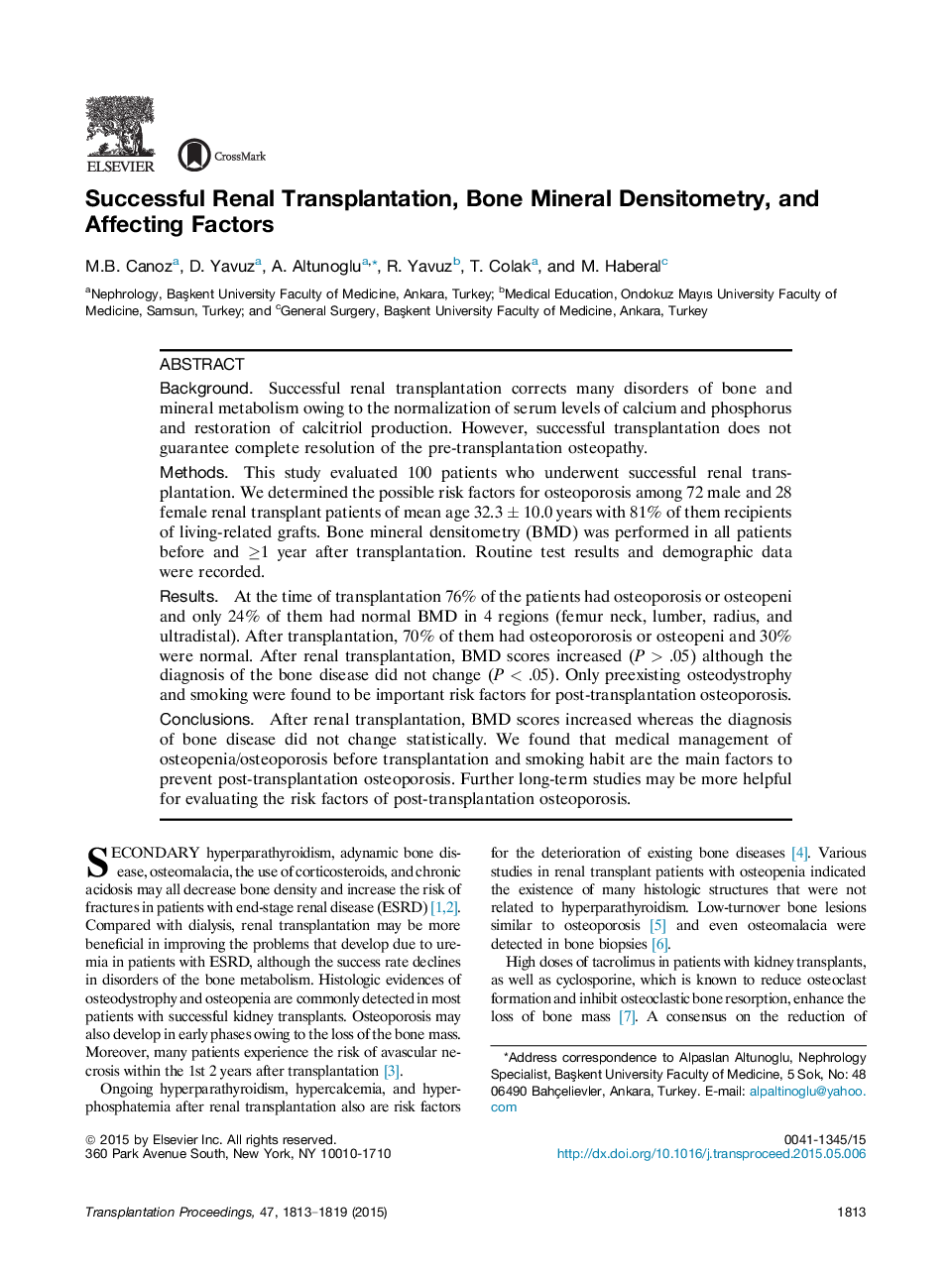| Article ID | Journal | Published Year | Pages | File Type |
|---|---|---|---|---|
| 6247195 | Transplantation Proceedings | 2015 | 7 Pages |
â¢Despite the increase in BMD scores after transplantation, this improvement was not reflected in the BMD-associated diagnoses in general, and pre- and post-transplantation BMD-associated diagnoses did not differ significantly in patients with kidney transplants.â¢After renal transplantation, BMD scores increased but the diagnosis of the bone disease did not change statistically.â¢The most important factor that influence the development of osteopenia and/or osteoporosis after renal transplantation is the pre-transplantation BMD value.â¢Medical management of osteopenia/osteoporosis before transplantation and smoking habit are the main factors to prevent post-transplantation osteoporosis.
BackgroundSuccessful renal transplantation corrects many disorders of bone and mineral metabolism owing to the normalization of serum levels of calcium and phosphorus and restoration of calcitriol production. However, successful transplantation does not guarantee complete resolution of the pre-transplantation osteopathy.MethodsThis study evaluated 100 patients who underwent successful renal transplantation. We determined the possible risk factors for osteoporosis among 72 male and 28 female renal transplant patients of mean age 32.3 ± 10.0 years with 81% of them recipients of living-related grafts. Bone mineral densitometry (BMD) was performed in all patients before and â¥1 year after transplantation. Routine test results and demographic data were recorded.ResultsAt the time of transplantation 76% of the patients had osteoporosis or osteopeni and only 24% of them had normal BMD in 4 regions (femur neck, lumber, radius, and ultradistal). After transplantation, 70% of them had osteopororosis or osteopeni and 30% were normal. After renal transplantation, BMD scores increased (P > .05) although the diagnosis of the bone disease did not change (P < .05). Only preexisting osteodystrophy and smoking were found to be important risk factors for post-transplantation osteoporosis.ConclusionsAfter renal transplantation, BMD scores increased whereas the diagnosis of bone disease did not change statistically. We found that medical management of osteopenia/osteoporosis before transplantation and smoking habit are the main factors to prevent post-transplantation osteoporosis. Further long-term studies may be more helpful for evaluating the risk factors of post-transplantation osteoporosis.
